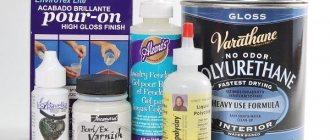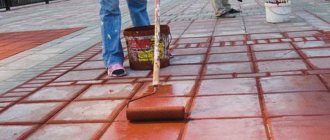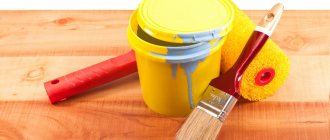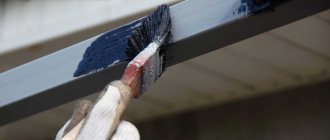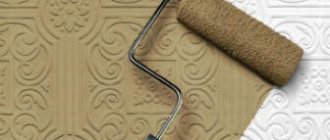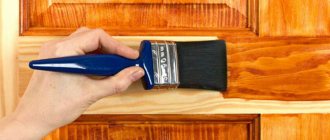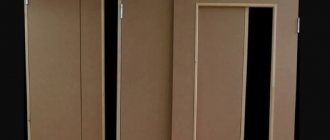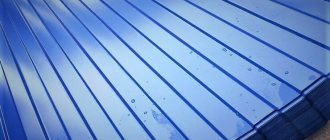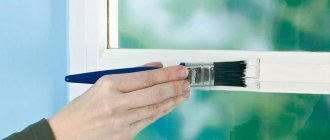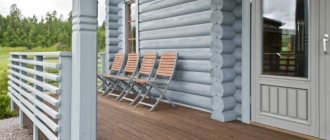Powder painting in large dimensional chambers!
Powder painting is the spraying of a special powder onto the metal surface and heat treatment at high temperatures (baking).
provides metal powder painting services in Moscow at competitive prices with excellent quality. We will apply a matte or glossy finish, metallic, antique or shagreen. Powder paint can be applied in two colors.
1. The polymerization chamber has an internal (useful) size: L = 17,500 mm S = 1,990 mm H = 1,800 mm
2. The polymerization chamber has an internal (useful) size: L = 6,500 mm S = 2,000 mm H = 3,100 mm
Possibility of powder painting in both ovens per day up to 2000 square meters! This is one of the largest powder coating plants in Moscow.
3. Services for mechanical cleaning of pipes (chimney sweep) diameter from 32 mm to 320 mm - productivity up to 10 tons per day!
Benefits of powder coating
- Minimum amount of waste. Coloring using high-quality equipment gives an efficiency of up to 98%.
- The sanitary and hygienic conditions there are changing for the better. This is an environmentally friendly technology, in which even in the oven the concentration of volatile substances does not reach the maximum permissible standards.
- No solvents are used, which results in less shrinkage and virtually no pores on the surface of the product.
- More economical use of material when painting. The powder coating hardens within half an hour and allows for a thicker, single-layer coating. Savings also lie in the absence of the need to maintain large production areas to dry the product in air. The harder powder coating is not damaged during transportation, which reduces packaging costs.
- The powder-painted surface is UV resistant, has electrical insulating and anti-corrosion properties.
- Powder paint makes it possible to create a palette of more than 5,000 colors.
- Reduced degree of explosion and fire hazard in production.
Advantages and differences of polymer powder coatings from traditional paints
Powder-polymer painting is different:
• high coloring speed; • absence of mandatory second painting and preliminary priming; • economical painting; • wide range of coating thickness and high adhesion; • the paint does not leave streaks on vertical surfaces; • stands out for its resistance to bending and impact; • resistant to corrosion and abrasion; • exhibits high resistance to weathering and chemistry; • resistant to temperature changes; • opens up opportunities for creating coatings that have modern electrical insulating, chemical, physical-mechanical, protective and decorative properties; • decorative painting; • environmentally friendly coating, because there are no toxic or flammable solvents, which eliminates the problem of safety and environmental protection.
The Ministry of Health has certified powder paints, which is why powder-polymer coating becomes especially attractive and is used in the production of medical and food equipment, and household appliances.
Disadvantages of powder coating
- The powder is melted at temperatures above 150 0C, which makes it impossible to paint wood and plastic.
- It is difficult to apply a thin layer of paint.
- Equipment for dry painting is highly targeted. In large ovens it is ineffective to paint small parts, and in a small oven it is impossible to paint a large surface area.
- A separate container must be used for each color.
- It is difficult to paint irregularly shaped objects or prefabricated structures.
- Equipping a painting line requires a large investment.
- If defects appear on the surface, they cannot be eliminated locally; the entire product will have to be repainted.
- There is no possibility to do tinting; you can only use factory paints.
Disadvantages of powder-based paint
Let us highlight the main five disadvantages that are typical for powder paint:
- Need a new container for each color. You can't use the same thing.
- An explosion is also possible, so you need to handle the can properly.
- It is very difficult to apply a thin layer of paint.
- If the temperature is low, it will be difficult to paint the surface.
- If the structure is non-standard or part of a prefabricated structure, then it will be difficult to use powder paint, since it is sprayed over a large surface area.
Pros and cons of powder coating of metal structures
Saving money. Thanks to the aspiration system, paint loss is only 1-4%.
High degree of production automation, allowing for quick training of workers.
Excellent strength and decorative properties of the coating.
Versatility. Using this method, any metal structures, including products of complex shapes, are painted.
At the same time, powder painting of structures is carried out only in specially equipped rooms and is limited by the internal dimensions of the polymerization oven. Local defects that arise during painting are not eliminated; in some cases, complete repainting of the product is required.
Another important nuance is that polymer paints cannot be tinted in the same way as liquid paints. The final color is determined by the batch recipe at the initial stage and cannot be changed during the process. This is a rather labor-intensive procedure that requires a spectrophotometer and appropriate software.
1.4. Areas of application of powder paints
The list of products that can be painted with powder paints is quite wide. There are industries where the rate of consumption of powder paints is growing particularly rapidly. An example is the coating of the internal surface of pipes for oil drilling and oil pumping, operating in conditions where factors such as high pressure, high temperatures and the presence of corrosive media can have a destructive effect on almost all, with rare exceptions, coatings.
In the United States, the automotive industry consumes about 15% of all powder coatings produced in the country, and their use is increasing due to the high quality of the resulting coatings, for economic reasons, as well as for environmental reasons. Powder paints are used by some car manufacturers to create intermediate primer layers for exterior coatings, as well as for finishing interior parts. The use of powder materials for finishing various automotive parts is increasing, where reliable protection is required along with a good decorative appearance. Wheel rims, bumpers, mirror frames, oil filters, engine blocks, electric battery housings, springs - these are just some of the many car parts that are powder coated. Powder varnish compositions for use over the main exterior coatings of automobile bodies are an alternative to liquid solvent-soluble varnishes.
The consumer goods industry is not the only market area using thermoset powder coatings; it accounts for about 17% of their total consumption. As the trend to replace silicate enamels with powder coatings develops, the use of powders in the consumer goods market will continue to grow. The areas of application of powder materials also include painting housings and casings of various products, freezers, drying drums, washing machine housings, etc.
The production of garden equipment and tools is also a large consumer of powder paints (about 7% of their total consumption). Industrial production consumes about 56% of all powder materials. By industrial production we mean all others, with the exception of the above-mentioned automotive industry, production of consumer goods, architectural structures and garden equipment and tools.
Large potential areas of the consumer market could be the rolled aluminum products industry, which currently represents 4% of the total North American powder coating consuming market. Recent advances in the development of polyether-triglycidyl isocyanurate (TGIC) systems and materials based on fluorine-containing polymers have allowed powder paints to compete with liquid systems for painting architectural structures in terms of durability, weather resistance and discoloration resistance. Some of these coatings have been successfully used in various construction areas for more than 15 years.
Powder paints in the consumer market are the fastest growing segment in the structure of all paints and varnishes. Of the approximately 5,000 types of powder coatings, about 1,000 are used on the North American market (Table 1.1).
Table 1.1
| Metal substrates | |
| Heavy, transport and agricultural mechanical engineering | Machine tools, pipes (gas, oil, land reclamation and water supply systems), car and motorcycle parts, bicycles |
| Instrumentation, electrical, radio and electronic industries | Transformers, capacitors, devices, tools |
| Production of consumer goods, household appliances | Refrigerators, water heaters, air conditioners, heating radiators, vacuum cleaners, metal furniture, sewing machine parts, housings for gas and electric stoves, washing machines |
| Construction | Fittings, sports ground equipment, lighting equipment, metal window frames and slate |
| Non-metallic substrates | |
| Construction | Facade facing tiles, asbestos-cement, ceramic; tiles |
| Production of consumer goods | Decorative ceramic products, plastic products, wood products |
Electrostatic spraying
Powder coating technology by electrostatic spraying.
Rice. 1 – Corona charging technology
Its popularity is due to the following factors: high charging efficiency of almost all powder paints, high productivity when powder coating large surfaces, relatively low sensitivity to ambient humidity, suitable for applying various powder coatings with special effects (metallics, shagreen, mauara, etc. ).
Along with its advantages, electrostatic spraying has a number of disadvantages, which are caused by the strong electric field between the spray gun and the part, which can make it difficult to apply powder coating in corners and in deep recesses. In addition, incorrect selection of electrostatic parameters of the sprayer and the distance from the sprayer to the part can cause back ionization and degrade the quality of the polymer powder coating.
Equipment for powder coating - an electrostatic spray gun is included in the standard Alpha Color powder coating complex.
Rice. 2 - Faraday cage effect
The Faraday cage effect is the result of electrostatic and aerodynamic forces.
The figure shows that when powder coating areas affected by the Faraday cage effect, the electric field generated by the spray gun is at its highest intensity at the edges of the recess. The power lines always go to the closest grounded point and are more likely to concentrate along the edges of the recess and protruding areas, rather than penetrating further inside.
The Faraday cage effect is observed in cases where powder paint is applied to metal products of complex configuration, where an external electric field does not penetrate, so applying an even coating to the parts is difficult and in some cases even impossible.
Rice. 3 - Reverse ionization
Back ionization is caused by excessive free ion current from the charging electrodes of the atomizer. When free ions hit the powder-coated surface of a part, they add their charge to the charge accumulated in the powder layer. But too much charge accumulates on the surface of the part. At some points, the amount of charge is exceeded so much that micro sparks jump through the powder, forming craters on the surface, which leads to a deterioration in the quality of the coating and a violation of its functional properties. Reverse ionization also contributes to the formation of orange peel, reducing the efficiency of sprayers and limiting the thickness of the resulting coatings.
To reduce the Faraday cage effect and reverse ionization, special equipment has been developed that reduces the number of ions in ionized air when charged powder particles are attracted to the surface. Free negative ions are diverted away due to the grounding of the atomizer itself, which significantly reduces the occurrence of the above-mentioned negative effects. By increasing the distance between the spray gun and the surface of the part, you can reduce the spray gun current and slow down the reverse ionization process.
Advantages and disadvantages
Each type of paint has its own strengths, which are in demand in certain situations. Powder paints are characterized by the following qualities:
- It is powder polymer mixtures that provide the most durable coating that does not change its characteristics over time. That is why it is usually used for cars and parts that will be subject to loads.
- The painting process is safe, as there is no toxic solvent in the composition.
- Painting takes much less time compared to liquid compositions.
- The material is consumed more economically, since the remaining paint that does not settle on the working surface can be reused.
One of the disadvantages is the need to carry out work in a special workshop.
The garage is not intended for such work. It is impossible to obtain a special shade by mixing several types of paint. You will have to use only what the manufacturer produced. The powder can only be used for heat-resistant materials. Liquid polymer paints are different in this sense, because despite their weaknesses, they can be mixed and applied in garage conditions even on thermally unstable surfaces. Based on the strengths and weaknesses of powders and enamels, it is clear when it is better to resort to one or another type of painting. If it is necessary to completely repaint a car body, it is better to use powder mixtures, which will provide a durable coating for many years. If we are talking about the need to repaint a local area of the car with an unusual color, then it makes sense to use enamel.
No. 1. The essence of the powder painting method
Compared to many existing paint materials, powder paint is a new type of coating. The technology was developed in the 1950s and has improved significantly since then and is now used in many industrial applications.
Powder paint is a multicomponent disperse system, the basis of which is a colorless, water-insoluble powder. Coloring pigments, hardeners, film-forming resins and other additives are added to it to ultimately obtain a mixture that has all the qualities necessary to create a coating. The size of individual grains of such a mixture is about 10-100 microns. There is no need to add a solvent, which is the main advantage of the method. Painting can be done quickly, without odor and harm to the environment.
The powder coating process consists of applying powder paint to a previously prepared, cleaned surface and polymerizing the resulting layer at high temperature. The technology of applying powder to the surface has its own nuances and features, which determine the powder coating option. The most commonly used methods are:
- electrostatic spray;
- application by air flow;
- electrostatic spray with air flow;
- application by flame.
The electrostatic spray method is the most popular. Paint particles are given an electrical charge by an external source or friction. The surface to be painted receives an opposite charge. An electrostatic field arises, thanks to which paint particles successfully settle on the surface. Those particles that never “stick” are subsequently captured and can be reused for coloring. After the powder layer is applied, the product is sent to the polymerization chamber, where the paint bakes.
The second method involves preheating the surface to be painted. The paint particles are kept suspended by the air flow. Falling onto a heated surface, the particles “stick” and melt, forming a coating. The thickness of the layer will depend on the degree of heating of the surface and the duration of contact with the powder. Often additional heating is not required, but in some cases heating in the chambers is used.
The third method is something between electrostatic and air spraying. The surface to be painted is not preheated, but the air molecules are ionized, as a result of which the paint particles, which are held by the air flow, are charged. A surface with a neutral charge is quickly covered with a uniform layer of charged paint particles. The technology is suitable for painting small and relatively simple-shaped objects.
The flame painting method is a new word in the field of powder coating. The paint is melted with compressed air, after which it is fed into a special gun and heated by burning propane. The molten substance is applied to the surface. Additional temperature exposure in the form of baking in an oven is not required, so even not the most heat-resistant materials can be coated in this way. The method is used to paint large objects or elements that are fixed in such a way that it is difficult or impossible to dismantle them.
In any case, a monolithic durable coating is formed on the surface as a result of melting powder paint. The hard film is produced by curing (thermoset paints) or cooling (thermoplastic paints).
Application principle
The application of the powder material looks like this:
- The material itself is ready for use; nothing needs to be done with it. You need to prepare the working surface, cleaning it from dirt, grease, remnants of old paint, repairing cracks and deep damage. Primers are often used before applying the finishing layer to improve adhesion and provide corrosion protection.
- This is followed by the direct application of the powder layer. It is the polymer spray booth that can cope with this task, since there are a lot of nuances here. A special gun is used that gives the fine powder particles a charge of electricity. After charging, the particles settle on the working surface of the part.
- A very important stage is the heat treatment of the powder, which forms the finishing layer. First, the polymer melts, and only then crystallizes.
- The process should be completed by cooling the part.
With the application of polymer enamel, everything is somewhat simpler, since this work can be carried out in simple garage conditions. The paste must be diluted with solvent or water. The application time of the finished composition is limited to several hours, so after diluting the paint there is no need to delay its application. To apply the material, you do not need to use expensive equipment, since for local work a regular brush or roller will be sufficient.
Advice. When choosing the type of paint, you need to take into account the specifics of application. To apply powder compositions, you can use only those surfaces that can be heated to a temperature of 180-200 degrees.
Types of powder paints
All produced types of powder paints can be divided into two large classifications - thermoplastic and thermosetting. It all depends on what film-forming substances are used in the composition.
Thermoplastic powder paints
Thermoplastic paints contain thermoplastic film formers. This type of paint forms a coating without creating chemical reactions; the particles are fused and then these alloys are cooled. Thermoplastic paints are based on polyvinyl butyral, polyamide, polyvinyl chloride and polyethylene.
The purpose of polyvinyl butyral paints is to have protective and decorative functions; they are petrol-resistant, electrically insulating and abrasion-resistant.
Polyvinyl chloride paints are resistant to the influence of detergents and are not afraid of atmospheric conditions. These paints are used to paint surfaces both indoors and outdoors.
The most popular and widespread are polyamide paints. When applied to the surface, they look most beautiful and aesthetically pleasing, they are durable and hard, they are not afraid of being under the influence of solvents and abrasion. They are used on parts indoors and for outdoor objects.
Paints based on polyethylene are usually used to protect the surface from various influences. Their physical, mechanical and anti-corrosion characteristics are very high. They perfectly isolate from the effects of electrical voltage. But this type of paint has two significant drawbacks: the coatings they form often crack, and such paints are not sufficiently resistant to weathering.
Thermosetting powder paints
Thermoset film former is an ingredient in thermoset paints. The formation of such surfaces occurs by melting particles among themselves and subsequent chemical processes. They are not soluble and not meltable. Thermosetting paints include polyester and epoxy resins, polyurethane, and acrylates. Most often, such coatings are used in the mechanical engineering industry.
Epoxy-based paints are quite durable, they are not afraid of the effects of solvents, but if they are overheated, they acquire a yellowish tint. If such a surface is exposed to ultraviolet radiation, the top layers of the coating are subject to destruction, their consistency becomes similar to chalk.
Polyester based paint should be used for exterior use. The top layer of such paint, due to exposure to open, constantly circulating air, is not subject to destruction.
Paints that contain polyurethane are characterized by a stable shine. Such paints have protective properties, they are abrasion-resistant and protect surfaces from the effects of friction. Surfaces coated with polyurethane paint are also protected from the effects of atmospheric influences, solvents, liquid fuels, water and mineral oils. And also such paints have an impeccable decorative application, their coating is similar to the appearance of crinkled silk.
Acrylate-based paint also has protective functions. It protects objects processed by it from various influences, including alkalis and temperature changes. For a long time, a surface with such a coating will delight you with its appearance.
What are powder paints for metal?
Powder paints for metal were developed in the sixties of the twentieth century. At that time, the need for them had reached its maximum, and their release to the market was a real breakthrough.
By the way, metallic coatings appeared almost simultaneously with the general mass of these paints and varnishes.
This material can be used to finish any metal surface, both in domestic and industrial settings. You can even paint galvanized steel air ducts using powder paints.
General principles of technology for applying powder paints to metal surfaces
Polymer powder paint (the second name for powder paints for metal surfaces) is applied to a surface that has undergone a special preparation procedure, and after completion of the coating process, the product is sent to a special oven, where under the influence of a certain temperature the process of polymerization of the paint coating occurs.
Preparing the surface for applying powder paints on metal
This stage is the longest and most labor-intensive among the entire process of applying powder paint and varnish material to a metal surface. It determines how elastic and high-quality the final paint coating will be.
This stage can be divided into three main processes:
- Removing all contaminants from the surface of the product that will be painted. This is done so that the powder paint on metal lays flat, and the final paint coating does not peel off after completion of the work;
- After completing the surface cleaning process, it is necessary to degrease the surface, and immediately after it phosphate it. This is done in order to increase surface adhesion, which, in turn, will have a positive effect on the service life of the paint coating made from powder paints on metal;
- The last stage of preparation is priming the surface. Here it is very important to use a special soil mixture with an anti-corrosion composition. This is due to the fact that even under a layer of paint and varnish material, oxidation processes can occur on the surface of the metal, and this in turn can destroy the paint coating of powder paints for metal.
Polymerization or baking
The painted metal product is placed in the oven. In it, under the influence of constant temperature, the part is heated and the paint polymerizes. The particles fuse to form a film, then harden and cool. The whole process takes about 15–30 minutes. Curing time depends on the size of the product and the type of oven.
The temperature in the polymerization chamber is kept within 150-200 0C and depends on the type of paint. The molten powder is able to fill all micro-irregularities, which gives good adhesion to the metal surface.
The paint receives all the necessary properties at the hardening stage: strength, appearance, protection. After this, the product should cool for 15 minutes. Otherwise, the coating may be damaged and dust and dirt may adhere to it.
Polymer powder painting: where to do it
You can't do polymer powder painting without equipment. This is its only drawback. Setting up a painting shop means spending from 300,000 rubles and occupying an area of 10 m². The more profitable and practical option is to contact the professional powder coating company POROSHKOVAIA-OKRASKA. Any detail will be painted in 1 day. Elements for painting are transported free of charge from your home to the workshop and back. The colors and effects are selected by a professional painter. Prices are set from 5 rubles for painting accessories, from 79 for mesh items, from 49 for forging, from 495 for massive parts, and so on. Check the cost in the window provided for this on the page of the official website of POROSHKOVAIA-OKRASKA. The calculation will take no more than 15 minutes.
Benefits of Powder Coatings
Metal powder painting technology has many advantages:
- Excellent physical, chemical and decorative properties of coatings that cannot be achieved by other painting methods, including a rich palette of possible color solutions.
- Good performance properties of coatings
- Durability of products painted with powder paints
- One-layer coating thanks to 100% dry matter content, which means the use of powder paints is economical
- Low porosity
- Improved impact resistance and anti-corrosion properties compared to other paints
- There is no need to control viscosity, since powder paints are supplied directly to the consumer in ready-to-use form
- Losses when painting with powder paints are 1-4%, and, for example, when using liquid paints - about 40%
- Coating hardens within 30 minutes
- No need for large powder paint storage areas
- Minimum damage to painted parts during transportation and reduced packaging costs
- Environmental safety of powder coating
In view of all the above advantages of this method of metal coloring, most industrialists today give their preference to it.
POWDER COATING
The range includes metal powder painting services, which have gained great popularity in the field of painting metal products.
With its help, the surface acquires high decorative properties, anti-corrosion, and impact resistance. She is not afraid of: precipitation, sunburn, high and low temperatures. No paint product can match the performance benefits of powder paint.
Powder coating of metal allows you to obtain high-quality and reliable polymer coating for doors, gates, fences, window grilles and stairs. After the powder coating process, the product becomes resistant to organic solvents, gasoline, acid solutions, and alkalis. Polymer powder painting is absolutely environmentally friendly, its technology does not require any solvents, is non-toxic and non-flammable.
Scope of application of powder painting
Powder polymer coating technology is used:
- in the production of facade elements,
- window profiles,
- metal furniture,
- roofing materials,
- office and garden furniture,
- gate,
- fences,
- furniture fittings,
- car rims,
- instrument panels,
- radiators,
- refrigerators,
- sports equipment,
- doors and almost any other metal surfaces that need to be reliably protected from corrosion, excluding drips on vertical surfaces and wrinkling of coatings during drying.
We provide powder coating services in the following areas: equipment, roofing materials, household and medical equipment, heating batteries, profiles, structures, radiators.
Powder paints
offers polymer coating services for your metal products of any complexity. We use paints from well-known and time-tested manufacturers, the colors of which are measured on the RAL scale. Preparation of the product surface for the powder painting process includes: cleaning, degreasing, priming (at the customer’s request), drying. Sometimes just degreasing with an organic solvent is enough.
In addition to the usual smooth, matte and glossy powder paints that many people use, we actively use paints with various textures and special effects:
- antiques
- shagreens
- metallics
- polymer varnishes
- paints with leather, silk, wood effect
RAL color catalog
| RAL |
Painting type "Crocodile skin"
Antique paint
Metallic paint
Painting type "Sahara"
Difference in composition
In terms of their structure, powder mixtures consist of solid particles of the dispersion type, which, together with pigments, are the basis for the material. To improve properties, film-forming resins, acrylates, hardeners and other fillers are added. The main difference from enamels is the complete absence of solvents. It is the solvent that makes the paint dangerous in terms of toxicity and the possibility of fire. Powder materials meet special requirements, in particular, the powder must be free-flowing and maintain a dry form.
Dry mixtures should not stick to surrounding foreign objects or form clumps for a long time. In fact, the material is already ready for use, since there is no need to add solvents. As for emulsion paints, it is a system of two immiscible liquids. Polymer-type paints in water consist of small globules, synthetic resin or rubber, emulsifier, pigment and other additives. Among liquid materials, styrobutadiene polymer paints can be distinguished, which contain a pigment in latex, a thickener, and an emulsifier. Before application, water or solvent is always added to such paints to give the material the desired viscosity.
Powder coating technology
It is possible to obtain a high-quality decorative coating on a metal product using powder paint only by strictly following the painting technology. The technique is that dry paint particles are sprayed onto a cleaned and degreased surface. An even, uniform layer of powder on the product is ensured by the fact that paint particles with a positive charge easily stick to the negatively charged metal surface. In order for these particles to turn into a layer of paint, they are baked in an oven at a temperature of 150-250 0C.
Powder coating technology consists of three stages:
- Preparation;
- coloring;
- polymerization.
Preparing the surface of the product for painting
This stage is the longest and most difficult. The further quality of the coating will depend on the preliminary preparation of the metal surface: strength, elasticity. The preliminary stage includes:
- cleaning from contaminants;
- degreasing;
- phosphating
Rust, oxides, and dirt are removed from the metal surface. If the old coating is left, the paint will not adhere well to the surface and the coating will not last long.
The most effective method for removing rust and oxides is shot blasting. For this, sand, steel or cast iron granules are used. Small particles under strong pressure or centrifugal force are applied to the metal and knock off contaminants from it.
Chemical cleaning or etching can be used. Hydrochloric, sulfuric, nitric or phosphoric acids are suitable for this. This is a simpler method that allows you to process a larger number of products than shot blasting. But it requires subsequent washing of the product from acids, which leads to additional time and financial costs.
Phosphating a product is similar to priming. The surface is treated with a composition that creates a phosphate film that improves adhesion.
Dyeing technology
When powder painting, painting technology is of great importance. The idea is to spray dry particles onto a degreased and cleaned surface. Positively charged paint particles easily stick to a negatively charged metal surface. This creates an even and uniform layer.
Only two spraying methods are used:
- Electrostatic . Electrostatically charged powder is applied to the grounded surface. This is done using a powder coating gun. Kohler acquires an electrical charge due to ionized air. It is located in the corona discharge area and is formed between the electrodes of the charging tip and the surface to be painted.
Electrostatic Painting Source graco.com
A high voltage source is built into the sprayer design. The main disadvantage of this method is the inability to apply paint into small depressions and recesses.
- Tribostatic . This method uses compressed air. As a result of friction with the dielectric, a charge appears. It holds paint molecules on the surface being painted. The dielectric is fluoroplastic - the atomizer is made from this material. This method is used for painting products with complex geometry. It is possible to use multi-jet nozzles, which increase the accuracy and uniformity of paint application.
Bottom line
Powder coating is the most economical, fastest and environmentally friendly way to obtain a reliable protective surface on metal. The service life of the product is significantly increased, and the decorative coating can be varied not only in color, but also in structure.
The difficulties of the technology lie in strict adherence to all stages. This requires a special production line. Problems may arise when:
- painting large items;
- products of complex shape;
- structures made of mixed materials.
The dry method has undeniable advantages over other types of staining:
- waste-free;
- variety of paints by cost and properties;
- high physical and mechanical properties of the painted metal surface.
For these reasons, powder coating has become one of the most popular modern methods of protecting metal from damage.
